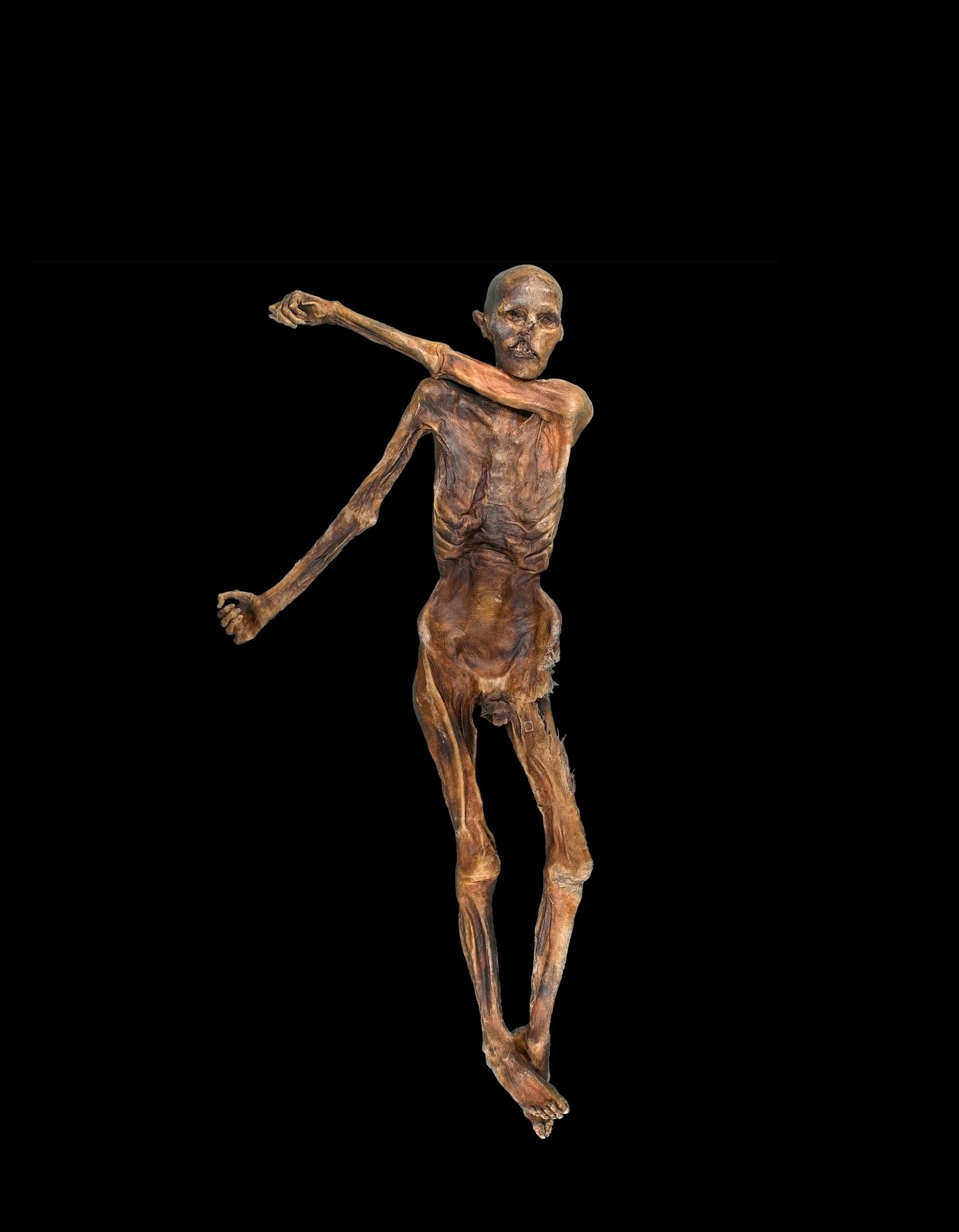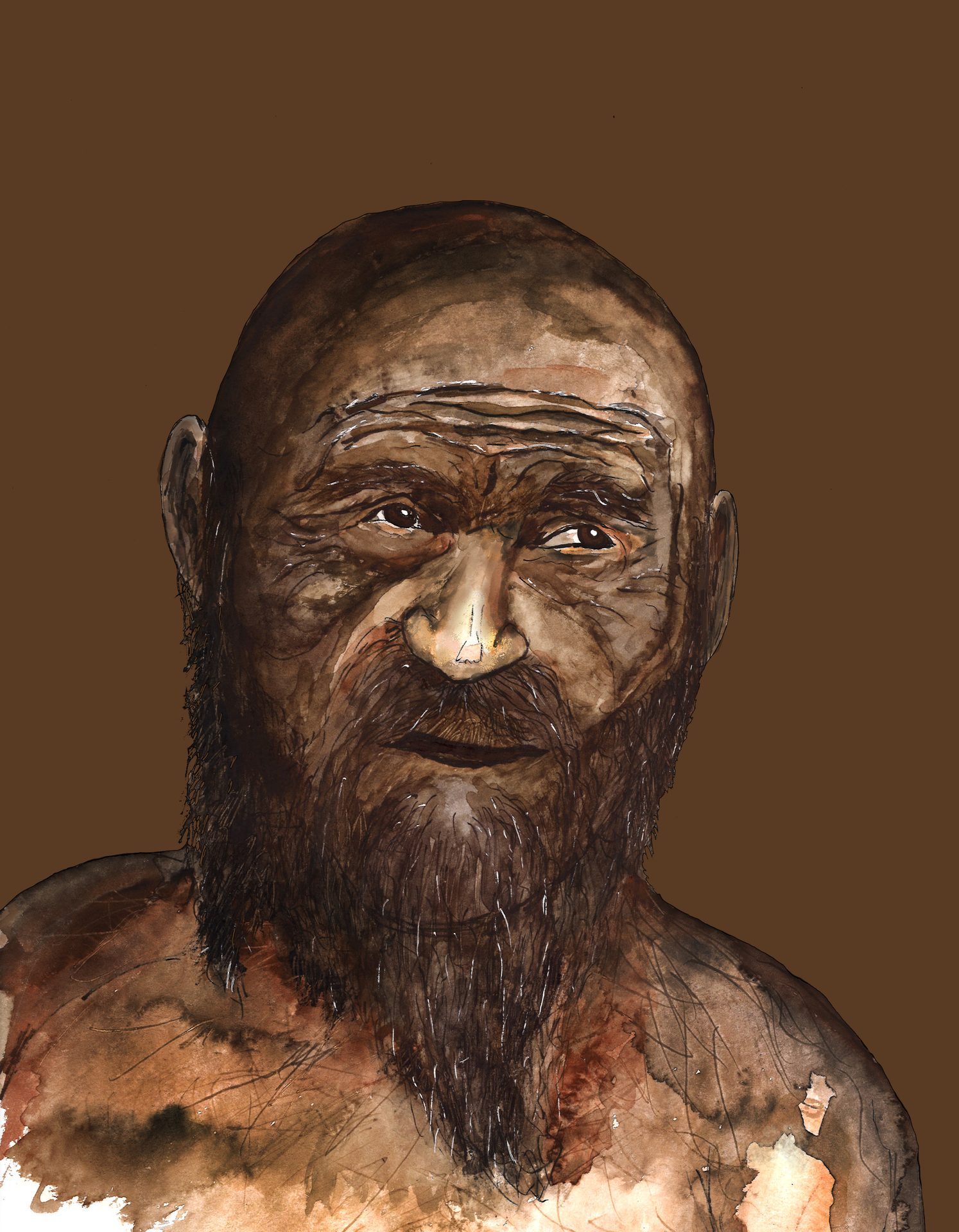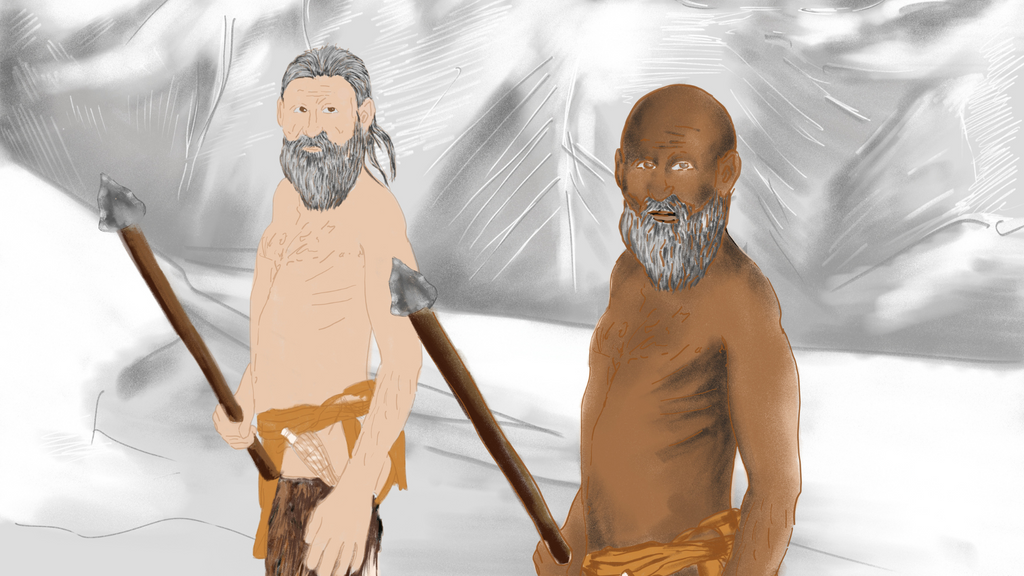A study released on Wednesday by Cell Genomics science journal announced a more accurate understanding of the genetic makeup and appearance of one of the world's oldest human glacier mummies, most notably that he was likely darker and balder.
The over 5,300-year-old hunter named Ötzi was initially believed to have olive-toned Mediterranean skin and to have descended from Eastern European Steppe Herders that moved to Europe around 2,800 BC. Research by the Max-Planck Institute for Evolutionary Anthropology in Leipzig, Germany, and the Institute for Mummy Studies of Eurac Research in Bolzano, Italy, found that Ötzi's skin was darker than previously thought.
It also found that he might have been almost wholly bald at the time of his death and he shared an unusually high proportion of genetic material with early farmers that migrated from Anatolia to Europe around 6,000 BC (and not with Steppe Herders).
“It's the darkest skin tone that has been recorded in contemporary European individuals. It was previously thought that the mummy's skin had darkened during its preservation in the ice but presumably what we see now is actually largely Ötzi's original skin colour,” anthropologist and study co-author Albert Zink stated.
The research used cutting-edge technology to sequence Ötzi's genome and compare it to a larger dataset of other prehistoric individuals than what was available during the first sequencing in 2012.
Insight into European prehistory
Over ten years ago Ötzi's genome was decoded with lesser technology and compared to a more limited pool of prehistoric European data that turned out to be contaminated with modern DNA. This led researchers to identify genetic material of Eastern European Steppe Herders. The mummy was correctly radiocarbon-dated to between 3350–3120 BC.

The glacier mummy Ötzi. Credit: South Tyrol Museum of Archaeology/EURAC/Marco Samadelli-Gregor Staschitz
Today's Europeans primarily descend from three ancestors: western hunter-gatherers that originally inhabited Europe and who were later joined by Anatolian farmers 8,000 years ago and Eastern European Steppe Herders 4,900 years ago.
"We were very surprised to find no traces of Eastern European Steppe Herders in the most recent analysis of the Iceman genome; the proportion of hunter-gatherer genes in Ötzi’s genome is also very low. Genetically, his ancestors seem to have arrived directly from Anatolia without mixing with hunter-gatherer groups," the Max-Planck Institute reported.
In other words, the low proportion of hunter-gatherer genes is proof that Ötzi's community must have remained isolated in the Alps for many generations after arriving in Europe.
Ötzi the Tyrolean Iceman
Ötzi was found lying face-down in the Tirolean Ötztal Alps (thus the name Ötzi) on the Italian-Austrian border in 1991 by Helmut Simon, a German tourist. Radiocarbon dating revealed that he had died about 5,300 years ago between the age of 25 and 35. At the time of death, he weighed about 50 kg and stood at a height of 1.6 metres.
It is clear that Ötzi did not live an easy life. Further studies concluded that he'd been infested with intestinal parasites, suffered from arthritis, and had broken his nose as well as several ribs. Wednesday's study also says that Ötzi was predisposed to diabetes and obesity.
None of these conditions were terminal. Experts initially believed that Ötzi had died of exhaustion or freezing. But in 2001, x-rays found an arrowhead in his shoulder, suggesting that Ötzi had actually been murdered. Despite his dramatic death, the preservation of his body, clothing and other personal objects in the glacier was near perfect. Experts were even able to determine what Ötzi's last meal had been: dried ibex and deer meat with einkorn wheat.

A portrait of what Ötzi may have looked like. Credit: Max Planck Institute for Evolutionary Anthropology
Other material goods found on or near him include: a fur robe stitched with pieces of animal skin; a woven grass cape; a furry cap; leather shoes stuffed with grass; copper-bladed axe; a flint dagger; 14 arrows of viburnum and dogwood; a bow made of yew; a fur arrow quiver; a supply of food including sloe berry, mushrooms and ibex bones; a grass net; a leather pouch and a wooden frame believed to have been used as a backpack. It is thought that such articles constituted typical Neolithic travel kit.
Other details about his appearance were also transformational to our understanding of Neolithic peoples. The few hairs found on his head are the oldest known example of haircutting, and some blue lines identified on his skin could be the earliest proof of tattoos.
Ötzi now lies in a custom cooling chamber in the South Tyrol Museum of Archaeology in Bolzano, attracting 300,000 visitors a year.

